Inbox and Environment News: Issue 276
August 14 - 20, 2016: Issue 276
Project Penguin 2016
Published on 8 Aug 2016 by Taronga SydneyOver 820 Northern Beaches students celebrated 10 years of caring for Little Penguins through the Zoo’s Project Penguin program.
$30.7 Million For Taronga Conservation Centre
Friday, 5 August 2016
Construction of Taronga Zoo’s new global centre for conservation science and learning for researchers, students and visitors will proceed after the Department of Planning and Environment signed off on the development, Environment Minister Mark Speakman announced today.
The $30.7 million Taronga Institute of Science and Learning will allow Taronga to build on its current world-leading education and research programs. Mr Speakman said the Institute would work with more than 10 universities across a range of scientific disciplines.
“The Institute will enable Taronga to expand on its strengths in science and education, increase the zoo’s ability to undertake leading research and inspire individuals and communities to secure a future for wildlife,” he said.
The zoo’s existing education facility will be demolished and a new three-storey centre built within the zoo.
The facility will support a range of learning programs for students from kindergarten to PhD level as well as the public, and provide facilities including:
• Tech labs for the study of animal welfare and conservation science• Facilities to support in-house and partner organisations working on the ground• Themed immersive classrooms for school children
The Taronga Institute of Science and Learning will be built to an environmentally sensitive design that allows the building to step down the site, retaining a similar height to the zoo’s existing Education Centre. The plans were publicly exhibited in January and February 2016 and construction work is scheduled to start in October this year.
Opening in 2018, the Institute of Science and Learning is part of the zoo’s Centenary Revitalisation Plan and is jointly funded by the NSW Government and the Taronga Conservation Society through donations to the Taronga Foundation.
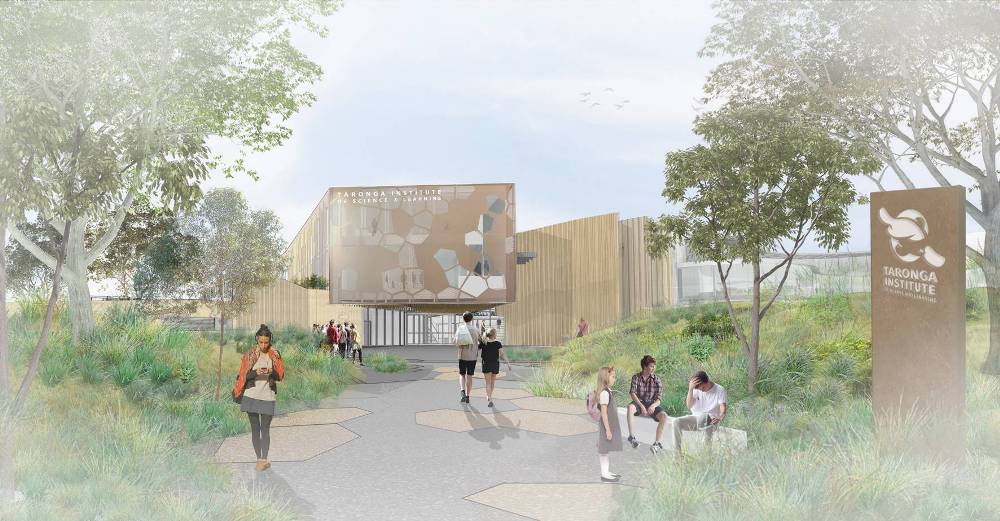
An artist's impression of the entrance to the Taronga Institute of Science and Learning

Taronga Zoo: The Taronga Institute Of Science And Learning
From Targona Zoo webpage: taronga.org.au/about-us/building-better-zoo/taronga-zoo/taronga-institute-science-and-learningToday, over 150,000 students participate in Taronga education programs including more than 100,000 students whose experience includes a visit to Taronga Zoo. Taronga also has the largest zoo-based conservation science team in Australia and works in close partnership with Government agencies and the international zoo and conservation community to protect our natural environment.
Located on the site of the current Education Centre, the Taronga Institute of Science and Learning will have:
Classrooms and lecture rooms for teaching students on the ground level with localized exhibits for animalsLaboratories and research facilities on the lower ground floor level, andOpen offices for life science, HR and education on the first floor level as currently located at the Education Centre.The existing lecture theatre and wildlife encounter experience area for students will be retained and upgraded. The existing courtyard will also be revitalised for improved recreational use for students and staff.
In line with the current ZooSnooz overnight ‘sleepover’ program for school children, there will be provisions in the ground floor level classrooms to provide a unique opportunity for school students to sleep over at the Zoo. There will be the additional opportunity to experience the wildlife of the Zoo with a behind-the-scene tour and observe and learn about animal behaviour during the evening hours.
Unique in the Southern Hemisphere, the Taronga Institute will build on Taronga’s existing strengths in research and education and increase its capacity to help secure a shared future for wildlife and people.
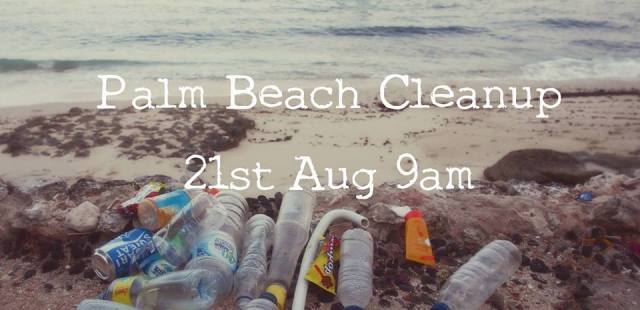
Living Ocean/Wander Lightly Beach Clean up: Palm Beach August 21
Our next clean-up is at Palm Beach on the 21st of August For this cleanup Wanderlightly & Living Ocean are proudly supported by the Boathouse at Palm Beach and will be following a slightly different format.
At 9am the Boathouse has ever so generously offered to put on Bacon & egg rolls & coffee when you bring your own reusable cup in - but you must bring your own cup for the free coffee!(Don’t fear if you don’t have one yet as they do sell them onsite)
You will need to register with the Facebook event as numbers are limited for the coffee/breakfast combo. Helpers however are not!!Register here: www.facebook.com/events/1647612212222410/
Over breakfast and coffee we will be giving a talk on ways you can make living with less plastic easier so come armed with those tricky questions!At 10am we will continue with our regular cleanup & at 11am the tally counting will begin.
Plan:9am - Bacon & egg rolls & coffee put on by the boathouse & living Plastic free talk10am - Beach Clean11am – Tally counting for Tangaroa blue
What to Bring:A bucket or bag to collect trash in and a pair of gloves to keep your mitts safe – we have a very limited amount of these so its handy when you bring them.
Where to meet:The Boathouse Kiosk
For more info email Sarah at info@wanderlightly.com
Read the report on the recent Mona Vale Beach Cleanup
09/08/2016 - Blog post: www.wanderlightly.com/?p=1085

Living Ocean/Wander Lightly Beach Clean up: Palm Beach August 21
Community Landcare Grants
Greater Sydney Local Land Services 2016 Community Landcare Grants are now open!
Grants of $5,000 - $30,000 over 18 months are available for community groups, including Landcare and other 'care' groups and landholders in the Greater Sydney region.
Applications open today Monday 8th August 2016 and close Monday 12th September 2016.
Projects must align with at least 1 of the Strategic Objectives developed for the Australian Government's National Landcare Programme:
• Projects that aim to maintain and improve ecosystem services through sustainable management of local and regional landscapes.Activities funded may include weed and pest control, bush regeneration, erosion management, fencing, plant propagation and revegetation, actions that protect for threatened species, development of management plans, community participation and engagement activities and training that contribute to the protection and restoration of ecosystem function, resilience and biodiversity.
• Projects that aim to build community awareness, participation, skills and knowledge in caring for their environment, including Aboriginal knowledge and participation. Activities funded may include the delivery of workshops, training courses, awareness raising events, booklets, signage, media and other activities designed to build awareness, improve skills and knowledge and/or promote the conservation and enhancement of biodiversity.
For full details including the grant guidelines please visit the Greater Sydney Local Land Services Website
To discuss project ideas or to find out more please feel free to contact Council's Bushcare Officer on 9970 1367.Bushcare in Pittwater
For further information or to confirm the meeting details for below groups, please contact Council's Bushcare Officer on 9970 1367Council's Cooee Newsletter - May- June 2016 HERE
BUSHCARE SCHEDULES
Where we work Which day What time
Avalon
Angophora Reserve 3rd Sunday 8:30 - 11:30am
Avalon Dunes 1st Sunday 8:30 - 11:30am
Avalon Golf Course 2nd Wednesday 3 - 5:30pm
Careel Creek 4th Saturday 8:30 - 11:30am
Toongari Reserve 3rd Saturday 9 - 12noon (8 - 11am in summer)
Bangalley Headland 2nd Sunday 9 to 12noon
Bayview
Winnererremy Bay 4th Sunday 9 to 12noon
Bilgola
North Bilgola Beach 3rd Monday 9 - 12noon
Algona Reserve 1st Saturday 9 - 12noon
Plateau Park 1st Friday 8:30 - 11:30am
Church Point
Browns Bay Reserve 1st Tuesday 9 - 12noon
McCarrs Creek Reserve Contact Bushcare Officer To be confirmed
Clareville
Old Wharf Reserve 3rd Saturday 8 - 11am
Elanora
Kundibah Reserve 4th Sunday 8:30 - 11:30am
Mona Vale
Mona Vale Beach Basin 1st Saturday 8 - 11am
Mona Vale Dunes 2nd Saturday+3rd Thursday 8:30 - 11:30am
Newport
Bungan Beach 4th Sunday 9 - 12noon
Crescent Reserve 3rd Sunday 9 - 12noon
North Newport Beach 4th Saturday 8:30 - 11:30am
Porter Reserve 2nd Saturday 8 - 11am
North Narrabeen
Irrawong Reserve 3rd Saturday 2 - 5pm
Palm Beach
North Palm Beach Dunes 3rd Saturday 9 - 12noon
Scotland Island
Catherine Park 2nd Sunday 10 - 12:30pm
Elizabeth Park 1st Saturday 9 - 12noon
Pathilda Reserve 3rd Saturday 9 - 12noon
Warriewood
Warriewood Wetlands 1st Sunday 8:30 - 11:30am
Whale Beach
Norma Park 1st Friday 9 - 12noon
Western Foreshores
Coopers Point, Elvina Bay 2nd Sunday 10 - 1pm
Rocky Point, Elvina Bay 1st Monday 9 - 12noonHunter Valley residents forced out by Rio Tinto take “New Bulga” village protest to Heritage Minister
August 08, 2016: Media Release by Lock the Gate AllianceRepresentatives from the town of Bulga will be outside the Baird Government’s ministerial offices to communicate directly to decision makers about the injustice of their village being sacrificed for Rio Tinto’s coal mine at Warkworth.
At midday, a delegation from Bulga will meet with Heritage Minister Mark Speakman’s office to ask him to intervene to protect Wallaby Scrub road (adjacent to Bulga) from being mined.
Yesterday, residents of the of the Hunter Valley village of Bulga travelled to Sydney to establish ‘New Bulga’ in the Domain, establishing a new village behind NSW Parliament to symbolise the loss of their community to the impacts of coal mining.
Wallaby Scrub Road forms part of the Great North Road running from Sydney to the north beyond Warkworth village. The road holds both State and Federal Heritage Status and warranted establishment of a protection and preservation organisation funded by both State and Federal Governments and named “Convict Trail Project” (CTP).
Bulga residents and supporters will also be seeking a meeting with roads Minister Duncan Gay’s office. Minster Gay could be the only person left in NSW with an opportunity to minimise harm caused to the Bulga community. As Minister, he has the power to uphold the will of the community and of Singleton Council who have voted not to sell – Wallaby Scrub Rd – to Rio, which they then want to close and mine."
The temporary Bulga village, in the heart of the Sydney CBD, included town signage, hay bales and a ceremony to establish ‘New Bulga’.
What: "New Bulga" community moves to Martin PlaceWhere: NSW Cabinet office from 7:00am, 52 Martin Place, Sydney
Speakers:Anne Maree McLaughlin, Bulga Milbrodale Progress AssociationBev Smiles, Wollar Progress Association
Background information:After fighting the proposed Rio Tinto Warkworth coal mine expansion for more than six years, the residents of Bulga have now exhausted all legal options to stop the project.
Bulga residents previously proved in court that the Warkworth project should not have been approved, after its initial approval in 2012. This victory was snatched away from them when Rio Tinto and the NSW Government joined forces to re-submit and approve the development application.
In approving the project for the second time, the NSW Government stripped Bulga residents of “third party merits appeal rights”, removing their legal right to challenge the merits of the approval in court. This denial of the community's legal rights is now standard practise in NSW mine approvals.
Expanding the Warkworth coal mine will dramatically reduce the quality of life in Bulga village, blanketing the community with air and noise pollution 24 hours a day. Bulga is likely to wither and die, as other Hunter communities that have suffered the same fate, including nearby Warkworth – a once bustling and now deserted community.
The NSW Planning Assessment Commission advised in March 2015 that Bulga may need to be relocated due to the mine expansion.
John Krey, President of the Bulga Milbrodale Progress Association, said: “We twice proved in court that this coal mine would do more harm than good. Not just for us in Bulga, but for NSW. But our victories were cruelly snatched away from us by an unfair, unjust system that values coal above all else.
“The system is broken. The rules are rigged against us. Communities like Bulga have been stripped of their legal rights to challenge mine approvals, no matter how bad they are. There is no recourse to justice for anyone whose life – or entire community – has been ruined. It is deeply unjust,” said Mr Krey.Leaked Government Report Reveals Failed Coal Mine Rehabilitation Costing Taxpayers $3.2 Billion
August 05, 2016 Media Release by Lock the Gate AllianceA leaked Queensland Government report estimates that taxpayers are set to foot a massive bill of $3.2 billion in coal mine rehabilitation costs because the current financial assurance system is not covering the full cost of mine rehabilitation.
The report shows that not only are the financial bonds held by coal companies completely inadequate to rehabilitate sites, but that on-ground progressive rehabilitation is in decline.
Rick Humphries, Coordinator of Lock the Gate's Mine Rehabilitation Reform Campaign, said this represents a scandalous failure of successive Queensland Governments to regulate big coal, who made huge profits during the boom and are now leaving taxpayers to pick up the bill.
“This leaked report reveals a systemic failure of coal mining companies to provide enough financial assurances to clean up after their mining operations,” Mr Humphries said.
“The report is a terrible indictment on the Queensland Government, who have failed to properly protect taxpayers and who have allowed big coal to rort the rehabilitation system to the tune of $3.2 billion.
“This is just the tip of the iceberg. The report didn’t cover other commodities like copper, lead or zinc. That’ll be billions more.
“When mining companies dodge their clean up responsibilities, we’re all left to pay more, and our community pays the cost of poorer schools and underfunded hospitals.
“This report shows that in the economic impact of these inadequate financial assurances just for coal is equivalent to 6.5% of the Qld government’s annual revenue, and thus a massive potential hit to health and education budgets.
“This report confirms our fears that the system of financial assurances and coal mine rehabilitation in Queensland is completely broken.
“We are calling for urgent and far-reaching legal reforms by the Queensland Government to immediately require full, upfront financial assurances from mining companies and to finally force big coal to rehabilitate their sites, instead of allowing them to cut and run” he said.
A copy of the report is available for download here.
Attachment1: Report Summary BriefingThe report is titled ‘Targeted Compliance Programme Report on Financial Assurance for Queensland Coal Mines (TCP-009)’.It was written by the Department of Environment and Heritage Protection and is dated 29 January 2016.
SummaryThe Report was designed to test the sufficiency of financial assurance (FA) held from coal mining companies for cleaning up their operations against the rehabilitation liability of QLD coal mines.Financial assurances were examined in detail for 15 Queensland coal mines, which equate to 28% of coal mines in the State, and the results of that analysis were extrapolated to the rest of the industry.The report focused on four key areas:a) Reconciling the amount of FA held by DNRM against those requested by DEHPb) Validating the rehabilitation liabilities and ensure the amounts are adequate, andc) Reviewing progressive rehabilitation performanced) Extrapolating the results to highlight the nature and full scale of the issues across the coal sector Key FindingsThe key findings of the DEHP report were that:1. The amount of financial assurance held for the 15 mines sampled is insufficient to complete rehabilitation at these sites. The estimated deficit is $839.8 million2. Extrapolating the sample results to the coal industry in Qld indicates that there is a $3.24 billion deficit in financial assurances3. The coal industry’s footprint is now estimated to be 190,000 hectares of disturbed land4. To date only 22.5% of coal mine disturbance has been subject to some type of “preliminary” rehabilitation down from 28% in 2006 and is on a downward trajectory5. 90% of the financial assurance amounts put forward by industry are incorrect and are too low due to the high use of industry calculators which are taken “at face value” by the regulators
SIGN OUR PETITION TODAY!We call on the NSW and Queensland Premiers to strengthen weak mining laws and force companies to honour their obligations to rehabilitate their mines. The following needs to be done:1. Increase the required deposit to cover rehabilitation costs2. Require all future mines to backfill their mining pits and protect water resources3. Establish an independent authority to monitor and enforce mine rehabilitation4. Penalise companies who breach rehabilitation requirements.
Bushcare in Pittwater
Where we work Which day What time
Avalon
Angophora Reserve 3rd Sunday 8:30 - 11:30am
Avalon Dunes 1st Sunday 8:30 - 11:30am
Avalon Golf Course 2nd Wednesday 3 - 5:30pm
Careel Creek 4th Saturday 8:30 - 11:30am
Toongari Reserve 3rd Saturday 9 - 12noon (8 - 11am in summer)
Bangalley Headland 2nd Sunday 9 to 12noon
Bayview
Winnererremy Bay 4th Sunday 9 to 12noon
Bilgola
North Bilgola Beach 3rd Monday 9 - 12noon
Algona Reserve 1st Saturday 9 - 12noon
Plateau Park 1st Friday 8:30 - 11:30am
Church Point
Browns Bay Reserve 1st Tuesday 9 - 12noon
McCarrs Creek Reserve Contact Bushcare Officer To be confirmed
Clareville
Old Wharf Reserve 3rd Saturday 8 - 11am
Elanora
Kundibah Reserve 4th Sunday 8:30 - 11:30am
Mona Vale
Mona Vale Beach Basin 1st Saturday 8 - 11am
Mona Vale Dunes 2nd Saturday+3rd Thursday 8:30 - 11:30am
Newport
Bungan Beach 4th Sunday 9 - 12noon
Crescent Reserve 3rd Sunday 9 - 12noon
North Newport Beach 4th Saturday 8:30 - 11:30am
Porter Reserve 2nd Saturday 8 - 11am
North Narrabeen
Irrawong Reserve 3rd Saturday 2 - 5pm
Palm Beach
North Palm Beach Dunes 3rd Saturday 9 - 12noon
Scotland Island
Catherine Park 2nd Sunday 10 - 12:30pm
Elizabeth Park 1st Saturday 9 - 12noon
Pathilda Reserve 3rd Saturday 9 - 12noon
Warriewood
Warriewood Wetlands 1st Sunday 8:30 - 11:30am
Whale Beach
Norma Park 1st Friday 9 - 12noon
Western Foreshores
Coopers Point, Elvina Bay 2nd Sunday 10 - 1pm
Rocky Point, Elvina Bay 1st Monday 9 - 12noon
Highest Ever Number Of Humpbacks Recorded At Cape Solander
8 August 2016: By NPWS
Cape Solander Whale Migration Study volunteers at Kamay Botany Bay National Park have wrapped up another year of vital citizen science work in monitoring whale numbers during their northern migration, recording the highest ever number of humpbacks passing the area since the count began in 1997.
A total number of 3032 humpbacks were counted heading north past Cape Solander by the volunteers this year, a 20 per cent increase from last year's 2513. The official count began on 24 May and finished on 31 July.
National Parks and Wildlife Service (NPWS) Wildlife Management Officer Geoff Ross said the number of whales passing the NSW coast usually peaks in the last week of June or first week of July, and the volunteers were vital in verifying the increase in the number of humpback whales migrating north this year.
"Hundreds of whales have already been sighted off the NSW coast in recent weeks and the Cape Solander Whale Migration Study volunteers have been busy observing and recording the number of whales that pass by Cape Solander during the annual northern migration," Mr Ross said."We're already starting to see a number of Humpback whales heading south many travelling with calves so the sea off NSW is a very busy place at the moment.
"I am very thankful for the work that the volunteers conduct here at Cape Solander as each year they report on the number of whales, particularly humpbacks, and their effort is being rewarded by seeing an ever increasing humpback population, which is excellent news for these majestic creatures as well as whale watchers.
"I congratulate the volunteers for their valuable contribution to whale conservation and look forward to working with them for many years to come."
The volunteers provide scientific data on southern right whales which is also incorporated into federal threatened species recovery planning and provides the community with cetacean statistics for NSW.
Mr Ross said that a large proportion of the estimated 24,000 humpbacks made the journey north this year and was growing annually. Mr Ross also urged people who want to see these magnificent animals from the shore to get out to a national park before the northern migration (which is closer to the coast) ends. Vessel-based whale watching will continue until October.
Humpback and southern right whales are the most commonly sighted whales along the NSW coastline as they head to the warmer waters off Queensland to breed, before making their return journey south to Antarctica.
For the most up-to-date whale sightings near you and to log your own, download the free Wild About Whales app.
Visit www.wildaboutwhales.com.au for all your whale watching information this season.
New Format As Pigs Fly In For Warrumbungles Concert
Media release: 9 August 2016 by NPWSA new format for the Warrumbungles Crooked Mountain Concert will see some of Australia’s up and coming country, rock and bluegrass artists perform at the signature Coonabarabran event on Saturday 5 November.
Coonabarabran National Park Visitor Centre Manager May Fleming said the concert was one of the region’s longest running community festivals.“The Crooked Mountain Concert has always featured a range of genres from the jazz tones of James Morrison to rock acts like year’s Boom Crash Opera.
“This year we’re delighted to have a really unique act in “The Pigs” leading an entertaining line up of artists.
“If you’ve never heard The Pigs unique way of performing well known pop songs in a toe-tapping hill billy style, then you’re in for a great surprise.
“Fresh from performances at Vivid Sydney and the Gympie Muster, The Pigs will be joined by Byron Bay Bluesfest openers Ivy as well as Golden Guitar nominee Mickey Pye, the tight harmonies of Bathurst duo Smith and Jones and local favourite Annie McKinnon.
“It’s a fresh line up and will continue our tradition of delivering great music in the phenomenal setting that is the Warrumbungle National Park, just designated as Australia’s first Dark Sky Park.
“We plan it with families in mind and there will be kids activities, local produce and non-alcoholic drinks available to purchase, visitors can also bring along their own picnic rugs, chairs, food and alcohol and of course camping is also available.
“This year we have been able to lower the ticket price to just $55 per adult, $50 Concession, $20 child (15 – 5 years) and under 5s are free,” Ms Fleming said.
Tickets will be on sale through Moshtix from 1 August, from the Warrumbungles National Park Visitor Centre in person or by phoning 6825 4364
Bus tickets from Coonabarabran and camping can also be purchased from the visitor centre. For more information visit the website:www.nationalparks.nsw.gov.au/crookedmountainNew wind energy framework to give certainty
01.08.2016: Ministerial Media Release- The Hon. Rob Stokes MP, Minister for PlanningA new wind energy planning framework will ensure that NSW has the right settings to attract investment in wind energy, while balancing the interests of the community. The new framework will address delays in the assessment process that in one case required more than 2500 days for a project to be determined. The average determination times for wind projects in the past five years has been more than 1000 days. Planning Minister Rob Stokes said the new framework is focused on driving better outcomes by encouraging proponents to engage early with the community. The policy framework has been developed in response to issues raised by community and industry around uncertainty in the application of the draft 2011 wind farm guidelines. Mr Stokes is inviting the community to have its say on the new planning framework. “We’ve consulted widely, including with key environmental groups, industry, other states and the Australian National Wind Farms Commissioner, to better understand the key issues in developing this framework,” Mr Stokes said. Overwhelmingly, the most contentious issues in dealing with wind projects are noise and visual impacts. The framework will provide guidance to the industry on how to better design their projects with these impacts in mind, in the context of environmental, social and economic impacts. It will provide greater certainty and consistency for the renewable energy industry and the community. Importantly, there will be no arbitrary buffer zones based on the height of turbines. For all other assessment requirements, wind energy developments will be subject to the same assessment framework as other State Significant Developments. “This new framework puts in place processes to identify potential impacts at an early stage to minimise conflict and delays,” Mr Stokes said. “The framework strikes the appropriate balance between giving clear guidance to industry whilst ensuring that the impacts of the project are assessed on their merit. “NSW has valuable wind and solar resources by international standards with many of the best areas located near existing electricity transmission infrastructure. The new framework will help NSW capture benefits from this industry and encourage investment in the State.” “We look forward to further engagement with community and stakeholders through the consultation period.” Submissions for the proposed wind energy framework can be made until 16 September 2016. The proposed new framework can be viewed at the link below or at the Department of Planning and Environment, 23-33 Bridge St, Sydney. Submissions can be made:• by post to Department of Planning and Environment, Attention: Director, Industry and Infrastructure Policy, GPO Box 39, Sydney NSW 2001• Submissions close on 16 September 2016.SUNDAY MORNING BIRDWATCHING with PNHA
Would you like to know more about our local birds and explore our bushland reserves? Then join us on one of our bird walks:
21 August, Chiltern Track, Ingleside (birds and wildflowers)
25 September, Irrawong Reserve, North Narrabeen
27 November, Warriewood Wetlands
Most walks start at 7.30 or 8am and last a couple of hours. Bring binoculars and morning tea for afterwards if you like. Contactpnhabirdwatching@gmail.com for details of each walk.
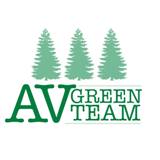 Av Green Team's Sustainability DaySaturday, September 3 at 12 PMFREE RSVP Bilgola Surf Life Saving ClubBilgola Beach
Av Green Team's Sustainability DaySaturday, September 3 at 12 PMFREE RSVP Bilgola Surf Life Saving ClubBilgola Beach
The new youth-run environment initiative the Av Green Team is hosting a free sustainability day for everyone to enjoy!
The day will kick off with a beach clean of Bilgola Beach at 10.30am followed by a workshop and speaking-based event held at Bilgola Surf Club.
The sustainability event from 12-4pm will feature speakers and workshops from individuals and groups who are choosing to work or live sustainably. The aim of the event is to bring people together who would like to learn more about sustainability and becoming environmentally conscious. There will be nibbles and Chai tea prepared by members of the Av Green Team and live music too.
We hope to see you there!Please RSVP to this event through the ticket link above!
SUNDAY MORNING BIRDWATCHING with PNHA
Would you like to know more about our local birds and explore our bushland reserves? Then join us on one of our bird walks:
21 August, Chiltern Track, Ingleside (birds and wildflowers)
25 September, Irrawong Reserve, North Narrabeen
27 November, Warriewood Wetlands
Most walks start at 7.30 or 8am and last a couple of hours. Bring binoculars and morning tea for afterwards if you like. Contactpnhabirdwatching@gmail.com for details of each walk.
 Av Green Team's Sustainability Day
Av Green Team's Sustainability DayFire Trail Network Improves Community Safety
10th August, 2016: NSW Government
NSW is implementing a network of strategic fire trails.The network is being developed with a focus on providing access for firefighters during bushfires and hazard reduction.
It requires the involvement of local bushfire management committees, including representatives from NSW Rural Fire Service (NSW RFS), police, councils, national parks and other agencies.
Minister for Emergency Services David Elliott said NSW had experienced devastating bushfires in recent years and an integrated network would assist hazard reduction.
“We are giving firefighters the powers they need to create an improved and integrated fire trail network across the state,” Mr Elliott said.
Work on a register of existing trails is underway. All fire trails will be in place in three years.Dargues Reef Mine: PAC Assessment Report Published
Dargues Reef Mine - Modification 3Majors Creek Road, Majors Creek, 13 km south of Braidwood, Southern Tablelands
Planning Assessment Commission Assessment_Report: 09.08.2016 | pdf | 1.8 MB'The assessment found that the modification would result in some additional water, heritage and biodiversity impacts. However, the Department considers that these additional impacts could be appropriately managed through implementation of the recommended conditions.'Available in full HERE
Planning Assessment Commission Public Meeting Notice onDARGUES REEF GOLD MINE MODIFICATION 3'Please note that the modification proposal referred to the Commission for determination no longer includes the use of cyanide for on-site ore processing and the enlargement of the tailings storage facility.These elements were removed by the Proponent in the Response to Submission report.'Available in full HERE
Dargues Reef Mine: PAC Assessment Report Published
United Wambo Open Cut Coal Mine Project
Street 134 Jerrys Plains RoadCity WarkworthExhibition Start 11/08/2016Exhibition End 22/09/2016
See all available documents and have your say here
A Joint Venture project between United Collieries and Wambo Coal which combines the existing open cut operations at Wambo with a proposed new open cut at United.
The Project will utilise the existing Wambo Mining Infrastructure Area (MIA), Coal Handling and Preparation Plant (CHPP) and train loading facility. The Project anticipates delivering up to 6Mtpa of product coal, providing jobs for around 500 employees with a life of mine of approximately 23 years. The Project proposes to relocate a 2km section of the Golden Highway and a section of 330kV powerlines to optimise coal recovery in the United Open Cut.
Extent of Mining Areas: Refer to Figure 1.3 - The project proposes realignment of the Wambo Open Cut boundary to maximise resource recovery. The realignment would result in approximately 5 hectares of additional disturbance for the Wambo Open Cut mine.
The Proposed United Open Cut mine is situated to the weast of the existing Wambo operations (refer to Figure 1.3)
The conceptual staged mine plans are shown on Figure 3.2 to Figure 3.6
Operating Hours 24 hours a day, 7 days a week
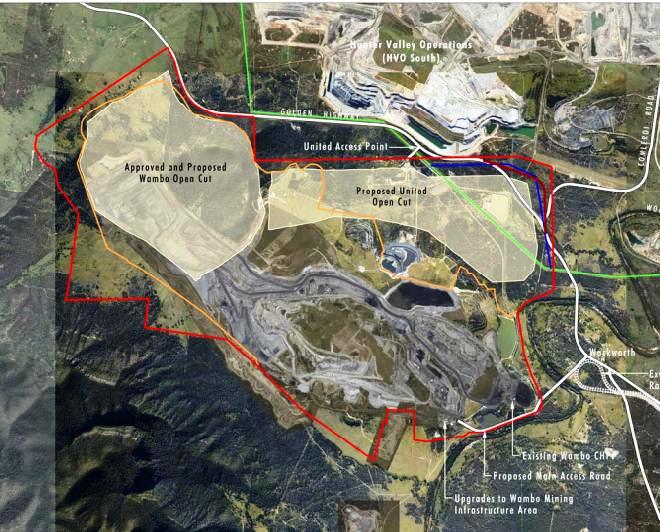
Figure 1.3
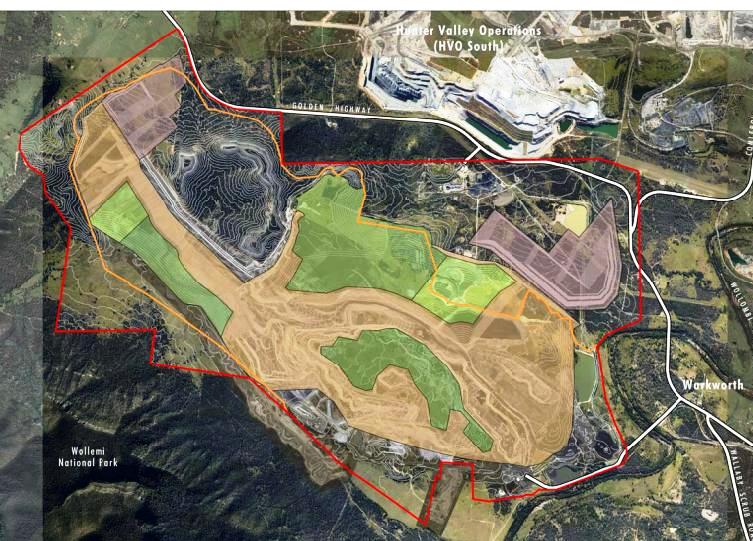
Figure 3.2


Have Your Say On Wyong Coal Mine
Wallarah 2 Coal ProjectEstablishment of an underground coal mine and associated infrastructure (see Preliminary Environmental Assessment). The proposal will also require Commonwealth assessment under the EPBC Act.
Exhibition Start 22/07/2016Exhibition End 05/09/2016
City WyongState NSWPost Code 2259Country AustraliaLocal Governments Lake Macquarie City Council and Wyong Shire Council
All Documents at: majorprojects.planning.nsw.gov.au/index.pl?action=view_job&job_id=4974 Amended application Document: HERE
The key features of the Project include:
• A deep underground longwall mine extracting up to 5 Million tonnes per annum of export quality thermal coal; • The Tooheys Road Site (located north-east of the intersection of the M1 Motorway and the Motorway Link Road) which includes a portal, coal handling facilities and stockpiles, water and gas management facilities, small office buildings, workshop, coal transportation infrastructure and connections to municipal water and sewerage systems; • The Buttonderry Site (near the intersection of Hue Hue Road and Sparks Road) which includes administration offices, bathhouse, personnel access to the mine, ventilation shafts and water management structures; • The Western Ventilation Shaft Site (located in the Wyong State Forest) includes a downcast ventilation shaft and water management structures; • An inclined tunnel (or ‘drift’) from the surface at the Tooheys Road Site to the coal seam beneath the Buttonderry Site; • Transportation of product coal to the Port of Newcastle by rail; and •An operational workforce of 300 full time employees.
The Project constitutes State Significant Development. As such, the Project has been subject to the assessment process under Division 4.1 of Part 4 of the Environmental Planning & Assessment Act 1979.Have your Say on Springvale Coal Mine
Modification to Springvale Extension ProjectExhibition Start 02/08/2016Exhibition End 23/08/2016
Proposed modification to Springvale Mine's consent SSD 5594 to (i) increase run of mine coal production limit from the approved 4.5 Mtpa to 5.5 Mtpa, (ii) increase workforce from the approved 310 full time equivalent personnel to 450 full time equivalent personnel, (iii) increase coal stockpile capacity at the Springvale pit top from the approved 85,000 tonnes to 200,000 tonnes. Amend applicant name on SSD 5594 from 'Centennial Springvale Pty Limited' to 'Springvale Coal Pty Limited'.
Visit:
Bush Regeneration And Envirofun Weekend
On: August 26-28, 2016At: Pittwater YHA, Morning Bay
Volunteer for two mornings’ bush regeneration and receive free accommodation, two evening meals, two BBQ lunches and two morning teas and free use of kayaks over the weekend of 26 to 28 August. Alternatively come for a Saturday or Sunday morning bush regeneration and enjoy a morning tea and BBQ lunch and kayak. It is only a $20 contribution ($50 nonrefundable booking fee with a $30 refund on arrival) for a weekend of great company, food and activities.
Bookings essential: 9999 5748 Email: Pittwater@yha.com.au
A Pittwater YHA activity in partnership with: • Pittwater Natural Heritage Association • National Parks and Wildlife Service • Northern Beaches Council • supported by the Greater Sydney Local Land Service • with funding from the Australian Government and the NSW Government.
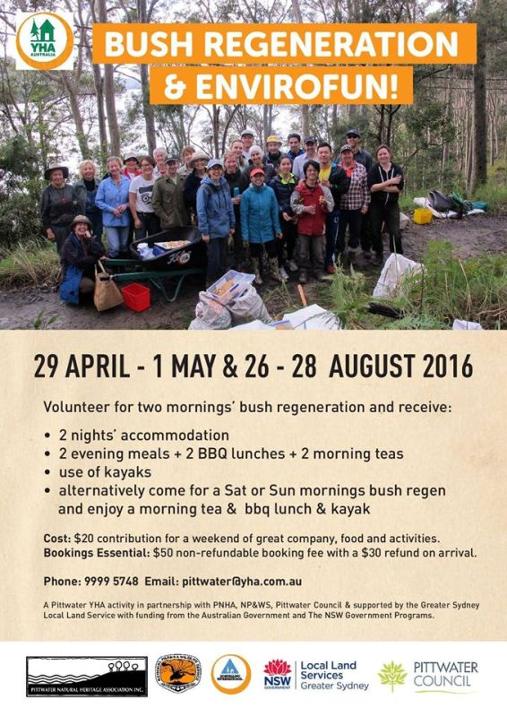

Community Activist Nancy Hillier Honoured In New UNSW Lecture
August 5, 2016: by Clare Morgan - UNSWThe Nancy Hillier Memorial Lecture, organised by UNSW and the City of Botany Bay, will recall the feisty campaigner's fight for justice.Intimidation and even death threats failed to deter community activist Nancy Hillier and she was still campaigning in her late 80s.
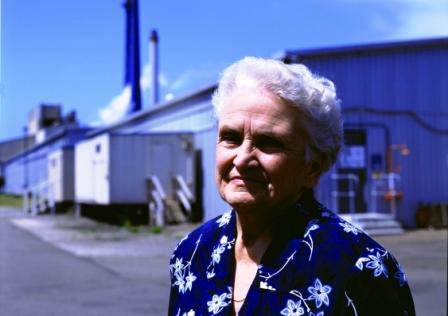
Nancy Photo: suppliedNancy Hillier OAM was a community activist and environmental warrior who fought passionately for justice for local residents, the community and the environment.
From the 1970s, Mrs Hillier led opposition to the expansion of Port Botany and Sydney Airport, fought residential and industrial overdevelopment and campaigned for an end to groundwater contamination by heavy industry. She also made significant contributions to legislation, such as the way environment impacts are assessed.
“We have a right to complain about improper planning. A country’s wealth must be assessed by the living conditions of its people and not be judged by how many millionaires it can boast,” Mrs Hillier once said.
Intimidation and even death threats failed to deter Mrs Hillier and she was still campaigning in her late 80s. She died in 2013 aged 89 but her legacy will live on thanks to an annual public lecture organised by the University of New South Wales (UNSW) and Botany Bay Council.
The annual Nancy Hillier Memorial Lecture, conceived by UNSW’s Faculty of Arts & Social Sciences, will recall Mrs Hillier’s work and passion while providing an avenue for others to debate issues and focus on community participation to achieve social objectives.
The inaugural lecture at State Parliament on 10 August will feature Johanna Garvin, Tanya Balakumar from UNSW, Ron Hoenig MP, Member for Heffron, and Mehreen Faruqi MLC, Greens NSW, discussing the future of citizen participation. The moderator will be Associate Professor Paul Brown from UNSW.
“Nancy was and still is inspirational in Botany, and beyond. She was greatly concerned about how the baton would pass to a younger generation of activists,” Associate Professor Brown said. “Over the years, the lecture series will feature young and emerging activists reflecting on their work and the importance of local action.”
The panel discussion will be preceded by a short film on Mrs Hillier’s life and community work by filmmaker Jane Castle. Ms Castle made the 2002 documentary Sixty Thousand Barrels, about the campaign Mrs Hillier led to compel Orica to move a stockpile of the toxic waste hexachlorobenzene (HCB) from the Botany Industrial Park.
In late July the multinational chemical company applied to the Federal Government to transport 135 tonnes of the carcinogenic pollutant, which has been banned in Europe since 1981, to a facility in Finland. In 2014 France rejected an application to send the waste there.
What: Nancy Hillier LectureWhen: 10 AugustWhere: Parliament of NSW Theatrette, 6 Macquarie St, SydneyBookings: Phone Botany Bay Council on 9366 3600 or emails.healy@unsw.edu.au
Nancy VideoPublished on 3 Aug 2016 By Jane Castle

Hi-Tech Test To Find Elusive Sawfish
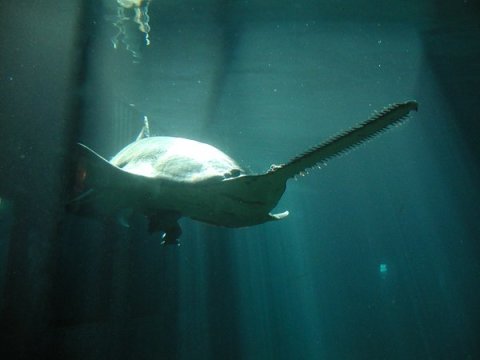
Sawfish. Credit: Colin SimpfendorferAugust 9, 2016
Researchers from James Cook University and Charles Darwin University are using the cutting-edge eDNA (environmental DNA) technique to look for the critically endangered largetooth sawfish in remote northern Australia.
eDNA sampling involves collecting a small sample of the water and analysing it for traces of the DNA of a target species. It has been made possible by huge advances in the field of DNA collection and analysis and is considered a revolutionary technology in the natural sciences.
JCU's Professor Colin Simpfendorfer said researchers first sampled water from different aquaria and were able to correctly tell which contained largetooth sawfish, before trying the technique in the wild.
Researchers say largetooth sawfish may now be extinct in 50 countries, with northern Australia one of the last places where they can be reliably found.
Traditional methods to search for sawfish, such as fishing surveys, can be expensive and time-consuming. To test the approach in the wild, the research team sampled known largetooth sawfish habitats in the Daly River, Northern Territory.
The team partnered with Malak Malak Traditional Owners and Indigenous rangers. "With plenty of sawfish habitat, Malak Malak country was the perfect place to test the new tool in the field," says Dr Peter Kyne of CDU.Professor Simpfendorfer said the technique was mostly accurate in waterholes but to date disappointing in flowing rivers. "It's not a big problem, this is very much a trial phase and it will be solved quite easily given some more time."
He said the eDNA techniques were rapidly evolving and were a huge advance for species conservation. "Sawfish are globally distributed and we don't even know if they still exist in many countries. Applying the eDNA approach globally will enable us to rapidly find threatened populations and prioritise their protection."
Professor Simpfendorfer said the eDNA technique was not limited to fresh water or conservation applications. "There is a big push to roll it out globally. It has many other potential uses, such as detecting invasive pest species at ports."
He said within five to ten years it's hoped that all eDNA analysis will be able to be completed in the field, with no need to take samples back to the lab.
The research project was funded in part by the Australian Government's National Environmental Research Program.
CA Simpfendorfer, PM Kyne, TH Noble, J Goldsbury, RK Basiita, R Lindsay, A Shields, C Perry, DR Jerry. Environmental DNA detects Critically Endangered largetooth sawfish in the wild. Endangered Species Research, 2016; 30: 109 DOI: 10.3354/esr00731

Katandra Sanctuary
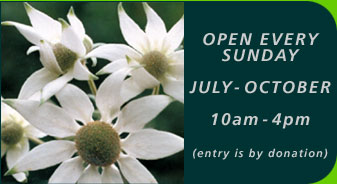
Katandra is a sanctuary for flora and fauna where the wildflowers are their most colourful during spring but all year round there are opportunities for bird watching. The sanctuary covers 12 hectares and is situated on the Ingleside/Warriewood escarpment. Choose to follow a short walk of about 1km or the longer 2km track through rainforest remnants with creeks and fern-fringed pools. Visit: www.katandra.orgMuogamarra in bloom
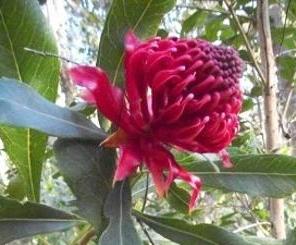 With spring just around the corner, it’s a great time of year to get outdoors in a national park and enjoy the crisp sunny days and beautiful blossoming flowers.
With spring just around the corner, it’s a great time of year to get outdoors in a national park and enjoy the crisp sunny days and beautiful blossoming flowers.
Muogamarra Nature Reserve, located in the northern outskirts of Sydney, transforms into a brilliant display of colour each August and September, when spring wildflowers come into bloom.
The reserve is only open for six weekends a year to preserve the fragile ecosystems and Aboriginal heritage, and this year, will be open each Saturday and Sunday from 13 August to 18 September.
The best way to explore the extraordinary nature reserve is on a special guided tour. There are three guided walks on offer, where you’ll see and learn about the reserve’s spectacular plants and enjoy stunning scenery.Or for the more adventurous, join the full-day 18km kayaking tour along the Hawkesbury River to see the reserve from the shoreline, take in the sheer cliffs and learn about the area’s fascinating history.
Challenge yourself on The Coast trackLooking for a walking adventure close to Sydney? The Coast track in Royal National Park, just one hour south of the CBD, is definitely one for your to-do-list.
You’ll walk along cliffs, beaches and escarpments, taking in magnificent ocean views and the rugged beauty of the coastline as you go.The 26km track can be walked over two days, combined with an overnight camping experience, or broken up into a series of day walks.
There’s also been no better time to lace up the boots and set out, as the track has recently undergone a $1.8 million upgrade over nine months. Works included construction of sandstone stairways and installation of 2.2km of new boardwalk at several sites.
This work has enhanced the walking experience for visitors, but has also prevented soil erosion and protected coastal vegetation.
The Coast track will also benefit from the recent funding announcement from the NSW Government, with $3.6 million allocated for the next 12 months and $9 million over four years.

 With spring just around the corner, it’s a great time of year to get outdoors in a national park and enjoy the crisp sunny days and beautiful blossoming flowers.
With spring just around the corner, it’s a great time of year to get outdoors in a national park and enjoy the crisp sunny days and beautiful blossoming flowers.Science Ship Becomes Floating Classroom
August 9, 2016: from CSIRO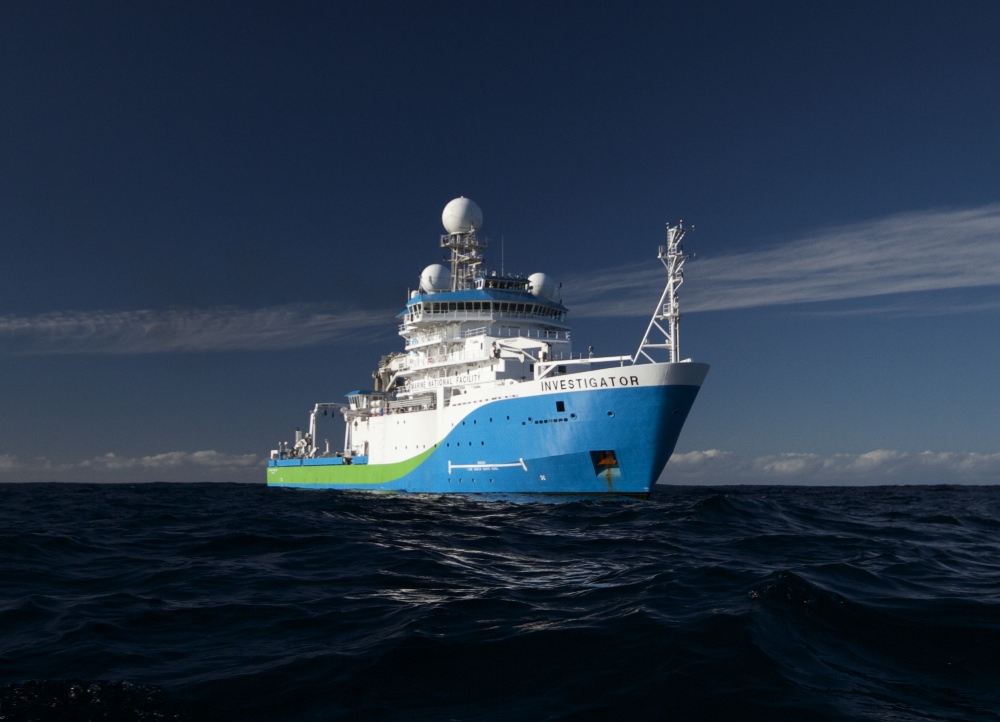
Investigator's capabilities mean science has no boundaries.© MNFAustralia’s future marine scientists are getting a boost from a new training program set to transform CSIRO’s science research vessel the RV Investigator into a floating classroom.
The unique program will give students and trainers dedicated time on board the Marine National Facility research vessel Investigator and expose them to a range of world class scientific equipment and technology.
The postgraduate training initiative is called CAPSTAN - Collaborative Australian Postgraduate Sea Training Alliance Network .
The program is an Australian first and will provide a collaborative national approach to teaching future generations of marine scientists and mariners.Director of CSIRO Marine National Facility, Ron Plaschke, said the new CAPSTAN program provides a fantastic opportunity for Australian marine scientists.
“This program provides practical training for students on board a multi-disciplinary ocean class research vessel,” Mr Plaschke said.“It gives students, and trainers, learning opportunities that are not available anywhere else in Australia.”
The centrepiece of the program is Investigator, which can operate anywhere from the ice edge to the equator and study the deepest parts of our region’s oceans, as well as the atmosphere above.
Research voyages in 2016 have already discovered undersea volcanoes, investigated climate change, mapped tectonic plate boundaries, foundrare deep-sea creatures and provided important information to monitor changes in our ocean environment.
Macquarie University’s Dr Leanne Armand, program coordinator for CAPSTAN, said this was one of the most exciting programs she has been involved with.
“We’re extremely pleased with this collaboration with CSIRO Marine National Facility, and this program will change the landscape of marine science education in Australia,” Dr Armand said.
“We can’t wait until the first students are on board and get underway on their voyage – it’s an exceptional project and groundbreaking partnership between Australian research institutions, industry and our nation’s leading science agency.”
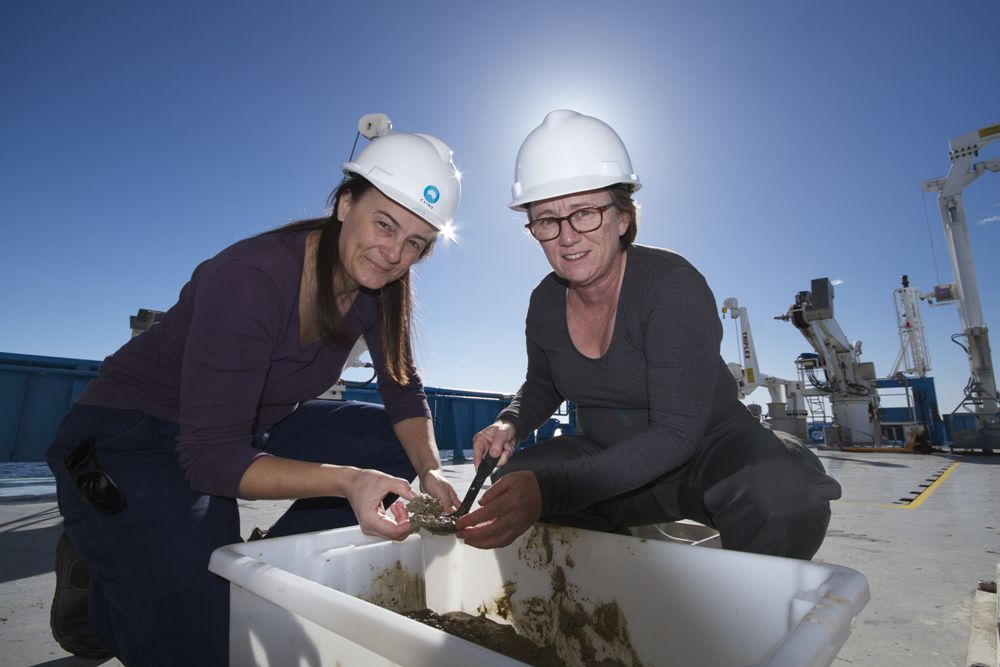
Dr Leanne Armand (left), coordinator of CAPSTAN.© MNF
The CAPSTAN program will complement other marine science education activities that CSIRO provides including ship tours for students and a training program that will put secondary school teachers on board Investigator alongside scientists conducting marine research.
Using Investigator’s high-tech capabilities, teachers and trainers on board are even able to share their experiences with students across Australia through live ship-to-shore video broadcasts.
The education and training programs enabled by Investigator aim to help train future generations of Australia’s marine scientists and mariners, and inspire studies in STEM (science, technology, engineering and mathematics).
“Enabling marine education and training is an important role not just for Investigator and CSIRO, but also for Australia,” Mr Plaschke said.“The students involved in CAPSTAN will be well positioned to become Australia’s future generation of marine scientists and mariners.“They will be the people supporting marine research and making discoveries that will help Australia meet future challenges in managing our vast marine estate."
The first participants in the CAPSTAN program are expected to join a transit voyage on Investigator later next year.The CAPSTAN application process is expected to open in early 2017 and further details are available on the program websiteVolcanic voyage of Investigator from CSIRO on Vimeo.


Volcanic voyage of Investigator from CSIRO on Vimeo.
Minister For Industry, Innovation And Science Reaffirms The Importance Of Science To Australia’s Future
Tuesday, August 9, 2016: Australian Government Media ReleaseOn 8 August 2016 the Minister for Industry, Innovation and Science, the Hon. Greg Hunt, delivered the Government’s vision for science in Australia, at an address to the National Research and Innovation Alliance.
Mr Hunt said “as the Minister responsible for science, I want to set new aspirations as core ingredient of that future.”
Outlining Australia’s proud science history and the role science has played in our society, the Minister stressed the need to further improve young Australians’ performance in science, technology, engineering and maths (STEM). Skills taught by these subjects, such as problem solving, are used in a variety of occupations.
The Minister also outlined the Government’s commitment to Big Science, critical research infrastructure and our science and research institutions, including the CSIRO.
The Minister also reaffirmed the Government’s commitment to delivering the National Innovation and Science Agenda.For more information, read the Minister’s speech.
The National Innovation and Science AgendaYoung AustraliansDid you know that in the next decade an estimated 75 per cent of jobs in the fastest-growing industries will need skills in science, technology, engineering and mathematics (STEM)? However, enrolment in STEM subjects has been in steady decline in Australia. The National Innovation and Science Agenda is providing more opportunities for Young Australians to get the skills they need for the jobs of tomorrow.
How can the Agenda help young Australians?Embracing the digital ageEnsuring the next generation of students have the skills needed for the workforce of the future is critical to ensuring Australia’s future prosperity and competitiveness on the international stage.
An estimated 75 per cent of jobs in the fastest-growing industries in the next five to 10 years will need science, technology, engineering and mathematics (STEM) skills and almost all jobs will require ICT literacy.
Leveraging off the Australian Curriculum: Digital Technologies, this initiative will ensure both students and teachers have access to the tools they need to enhance their digital literacy to form a workforce skilled to meet Australia’s innovation agenda.
What is happening?We’re providing a $51 million package over five years that includes: Online computing challenges available nationally for Year 5 and 7 students. ICT summer schools for Years 9 and 10. Annual ‘Cracking the Code’ national competition for Years 4 to 12. Support for teachers to implement the Digital Technologies curriculum through online learning activities and expert help. Support for school leaders to drive digital literacy and partnerships to bring scientists and ICT professionals into the classroom.
When is it happening?New initiatives will commence from 1 July 2016.Find out more about Inspiring all Australians in Digital Literacy and STEM
Almost $65 million has been allocated for 10 initiatives under the Inspiring all Australians in Digital Literacy and STEM measure as part of the National Innovation and Science Agenda.
The aim of these 10 initiatives is to increase the participation of Australian children and young people in Science Technology Engineering Mathematics (STEM) and improve their digital literacy. There will be a focus on tackling the digital divide by ensuring that students most at risk of falling behind in the digital age are given opportunities to participate and engage in early childhood, primary and secondary school settings.
STEM engagement in the early years comprises the following three initiatives: $4 million for Froebel Australia to expand their existing programme, Little Scientists, aimed at engaging young children in fun experiments and other activities. $4 million for the Smith Family to expand and improve on their existing programme, Let’s Count, designed to engage parents and their children in the early concepts of mathematics. $6 million to develop and disseminate a series of play based apps called Early Learning STEM Australia (ELSA). These apps will foster an interest and appreciation for science and mathematics among young children and their carers.
Embracing the digital age comprises the following seven initiatives: Expansion of the University of Adelaide’s highly regarded Massive Open Online Course (MOOC) in Teaching the Australian Curriculum: Digital Technologies. This course is targeted at upper primary and lower secondary teachers to help them develop fundamental teaching skills and knowledge relating to the new digital technologies curriculum. More information on the MOOC is available from:
Peripatetic (travelling) ICT Teachers: specialist ICT teachers will be deployed to schools for up to a term to provide intensive in class support. These specialists will deliver face-to-face training to teachers in disadvantaged schools, providing up to one term of in-classroom support for several hours a week. Additionally, the specialists will leverage off existing partnerships made between schools and ICT professionals as well as facilitate new ones.
ICT Summer Schools: secondary school students with an interest in computer science will be targeted, especially girls and other groups typically unrepresented in this field to encourage them to aspire to careers that harness such skills. The summer schools will be held over three days with follow up mentoring and a 6 month recall, rotating each year across Sydney, Brisbane, Melbourne and Adelaide. Up to 60 students will participate in summer school at any one time. A tender for delivery of this initiative is expected to open in May.
Cracking the Code: an annual celebration of coding to be held as part of National Literacy and Numeracy Week each August. Digital literacy is not just about computers – the skills acquired through coding activities are critical in supporting general literacy and numeracy skills. Through fun ‘real world’ activities students and their teachers will explore the wonderful world of code. A tender for delivery of this initiative is expected to open in May.
Grants to enhance implementation of the Australian Curriculum-Digital Technologies: principals and ICT leaders will be able to apply for modest grants to facilitate implementation of the new digital technologies curriculum. Up to 100 grants will be funded each year over two consecutive years. Grants will be awarded on a competitive basis with priority given to those projects that demonstrate genuine innovation, sustainability and positive educational outcomes. Schools may choose to partner together and share a grant. Detailed grant guidelines will be published on the Students First website later in 2016.
Support for STEM professionals to partner with schools: it is envisioned that, as a result of this initiative, more students will consider future careers in STEM fields thereby addressing (in part) the acute skills shortages in the STEM sector. This initiative will further capitalise on the success of the existing Scientists in Schools, Mathematicians in Schools and ICT in Schools programmes (collectively known as SMiS).www.csiro.au/en/Education/Programs/SMiS
Computing challenges for years 5 and 7: a series of structured, graduated and fun computing activities and challenges will be made freely available to all students in years 5 and 7. This will be delivered as an online series of structured, progressive teaching and learning activities that are run by teachers, during class time. The challenges will complement and support implementation of some of the most challenging aspects of the digital technologies curriculum. A tender for delivery of this initiative is expected to open shortly.Funding for all of the above initiatives commences on 1 July 2016.
The Australian Government Department of Education and Training is leading these initiatives in partnership with key stakeholders including the state and territory education authorities and the non-government school sector. More information can be found on the department’s website atwww.education.gov.au/inspiring-all-australians-digital-literacy-and-stem. More at: innovation.gov.au/audience/young-australians
Leucism
The terms leucistic and leucism are derived from medical terminology (leuc- + -ism). The stem leuc- is the Latin variant of leuk- from the Greek leukos meaning "white".
Leucism is a condition in which there is partial loss of pigmentation in an animal resulting in white, pale, or patchy coloration of the skin, hair, feathers, scales or cuticle, but not the eyes. Unlike albinism, it is caused by a reduction in multiple types of pigment, not just melanin.
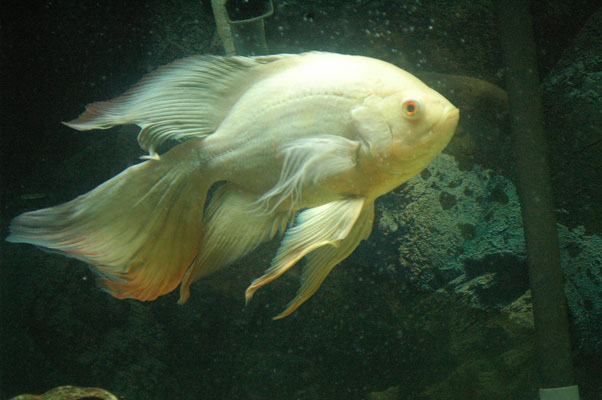 Leucism (occasionally spelled leukism) is a general term for the phenotype resulting from defects in pigment cell differentiation and/or migration from the neural crest to skin, hair, or feathers during development. This results in either the entire surface (if all pigment cells fail to develop) or patches of body surface (if only a subset are defective) having a lack of cells capable of making pigment.
Leucism (occasionally spelled leukism) is a general term for the phenotype resulting from defects in pigment cell differentiation and/or migration from the neural crest to skin, hair, or feathers during development. This results in either the entire surface (if all pigment cells fail to develop) or patches of body surface (if only a subset are defective) having a lack of cells capable of making pigment.
Since all pigment cell-types differentiate from the same multipotent precursor cell-type, leucism can cause the reduction in all types of pigment. This is in contrast to albinism, for which leucism is often mistaken. Albinism results in the reduction of melanin production only, though the melanocyte (or melanophore) is still present. Thus in species that have other pigment cell-types, for example xanthophores, albinos are not entirely white, but instead display a pale yellow colour.
Right: Leucistic long-finned oscar (Astronotus ocellatus) photo by Kurt Auerbach
More common than a complete absence of pigment cells is localized or incomplete hypopigmentation, resulting in irregular patches of white on an animal that otherwise has normal colouring and patterning. This partial leucism is known as a "pied" or "piebald" effect; and the ratio of white to normal-coloured skin can vary considerably not only between generations, but between different offspring from the same parents, and even between members of the same litter. This is notable in horses,cows, cats, dogs, the urban crow and the ball python but is also found in many other species.A further difference between albinism and leucism is in eye colour. Due to the lack of melanin production in both the retinalpigmented epithelium (RPE) and iris, albinos typically have red eyes due to the underlying blood vessels showing through. In contrast, most leucistic animals have normally coloured eyes. This is because the melanocytes of the RPE are not derived from the neural crest, instead an outpouching of the neural tube generates the optic cup which, in turn, forms the retina. As these cells are from an independent developmental origin, they are typically unaffected by the genetic cause of leucism.
Leucism. (2016, June 15). In Wikipedia, The Free Encyclopedia. Retrieved from https://en.wikipedia.org/w/index.php?title=Leucism&oldid=725457311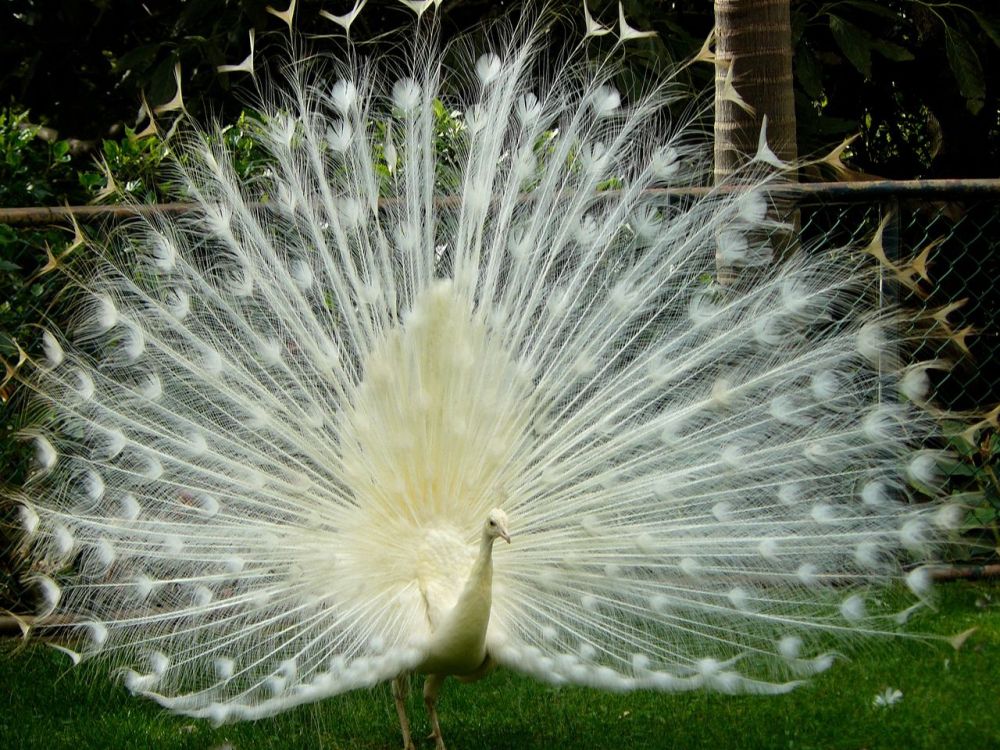
Leucistic Indian peacock (Pavo cristatus) photo by Félix Potuit - Paon blanc faisant la roue (Jardin Botanique, Funchal, Madère, 2008)
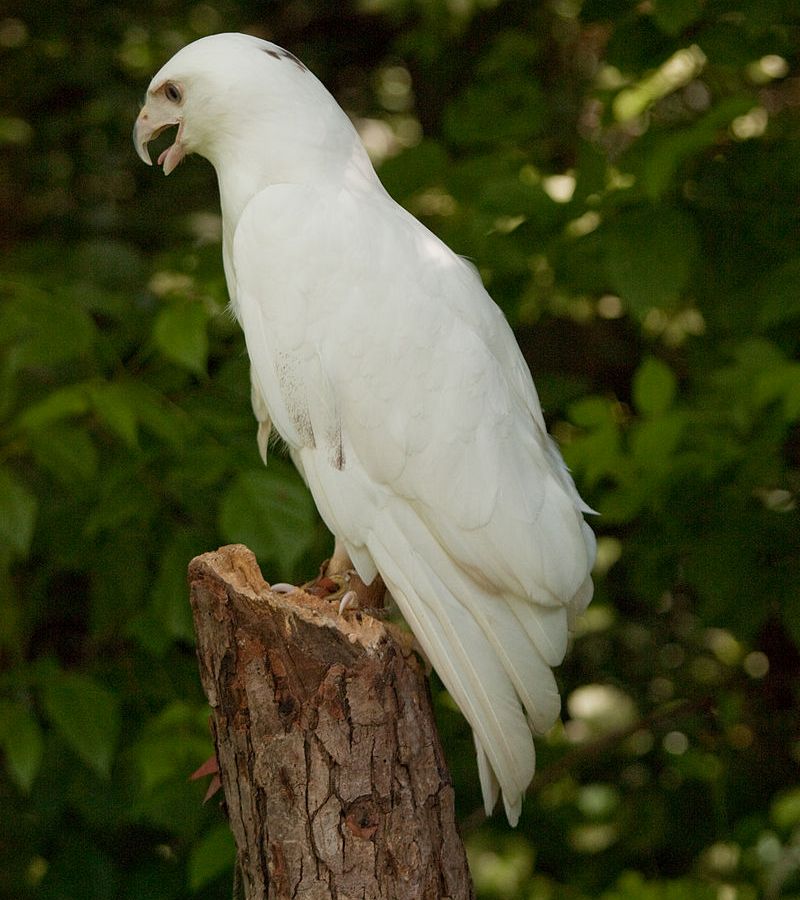
Leucistic red-tailed hawk (Buteo jamaicensis) - photo by Greg Hume - Leucistic hawk cared for at Cincinnati Raptor Inc.
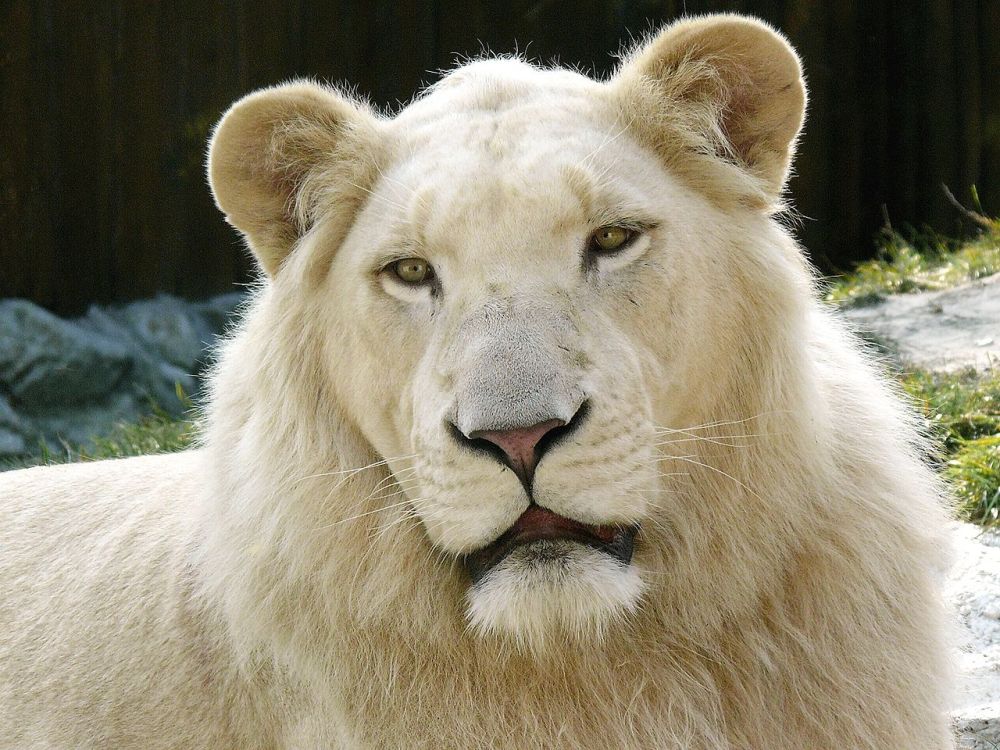
Leucistic white lions owe their colouring to a recessive allele. Note the eyes and lips remain the normal colour - photo by Stano Novak - ZOO Bratislava - African Lion (Panthera leo krugeri)
 Leucism (occasionally spelled leukism) is a general term for the phenotype resulting from defects in pigment cell differentiation and/or migration from the neural crest to skin, hair, or feathers during development. This results in either the entire surface (if all pigment cells fail to develop) or patches of body surface (if only a subset are defective) having a lack of cells capable of making pigment.
Leucism (occasionally spelled leukism) is a general term for the phenotype resulting from defects in pigment cell differentiation and/or migration from the neural crest to skin, hair, or feathers during development. This results in either the entire surface (if all pigment cells fail to develop) or patches of body surface (if only a subset are defective) having a lack of cells capable of making pigment.


Moore Park light rail design revealed
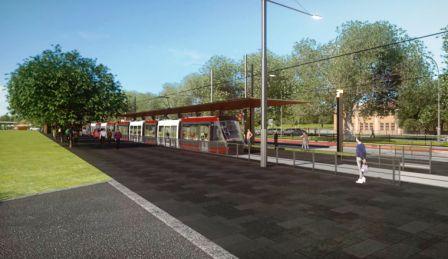
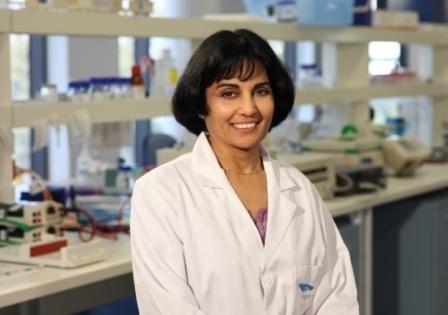
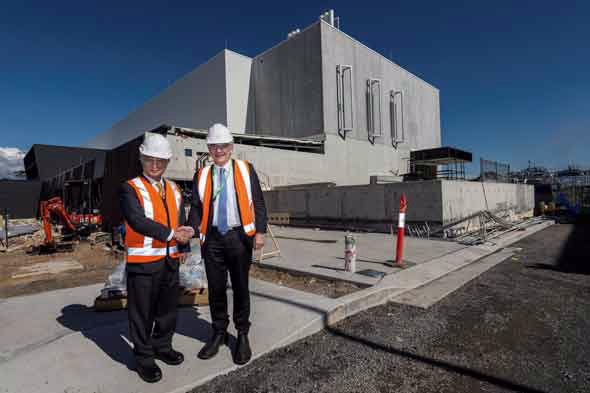
Navigating the human genome with Sequins
New chili pathogens discovered in Australia
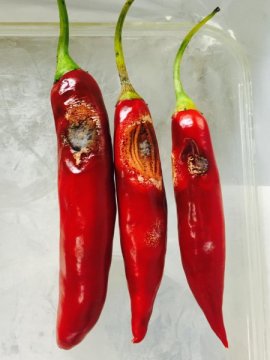
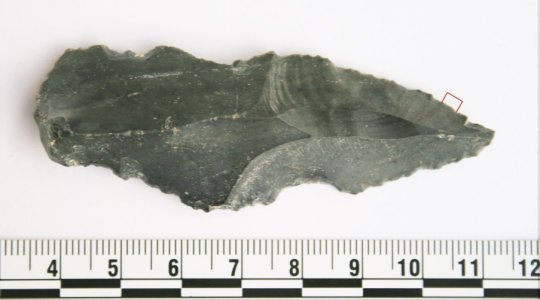
Bedford truck acquisition
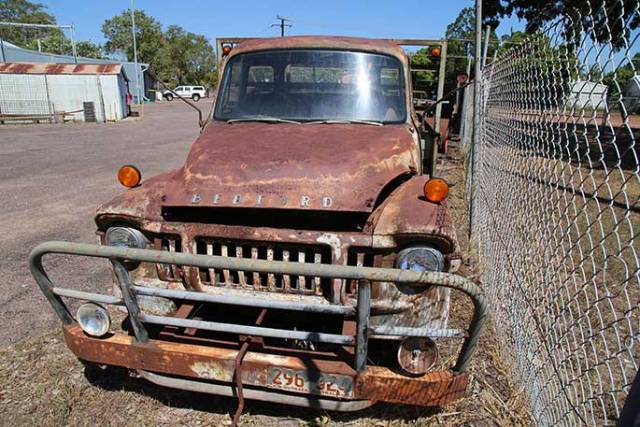
Testing new systems of training and apprenticeships
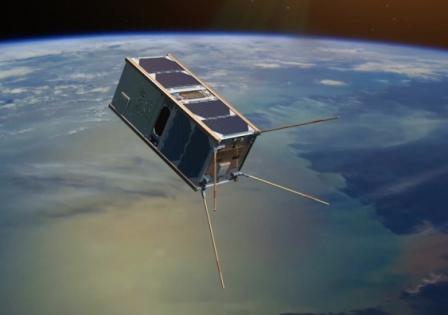
Remembering the Battle of Lone Pine
Centenary of the Battle of Romani
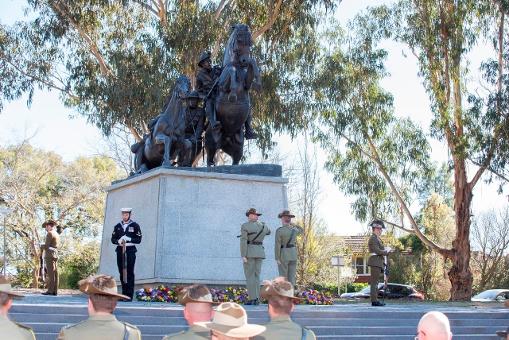
Disclaimer: These articles are not intended to provide medical advice, diagnosis or treatment. Views expressed here do not necessarily reflect those of Pittwater Online News or its staff.